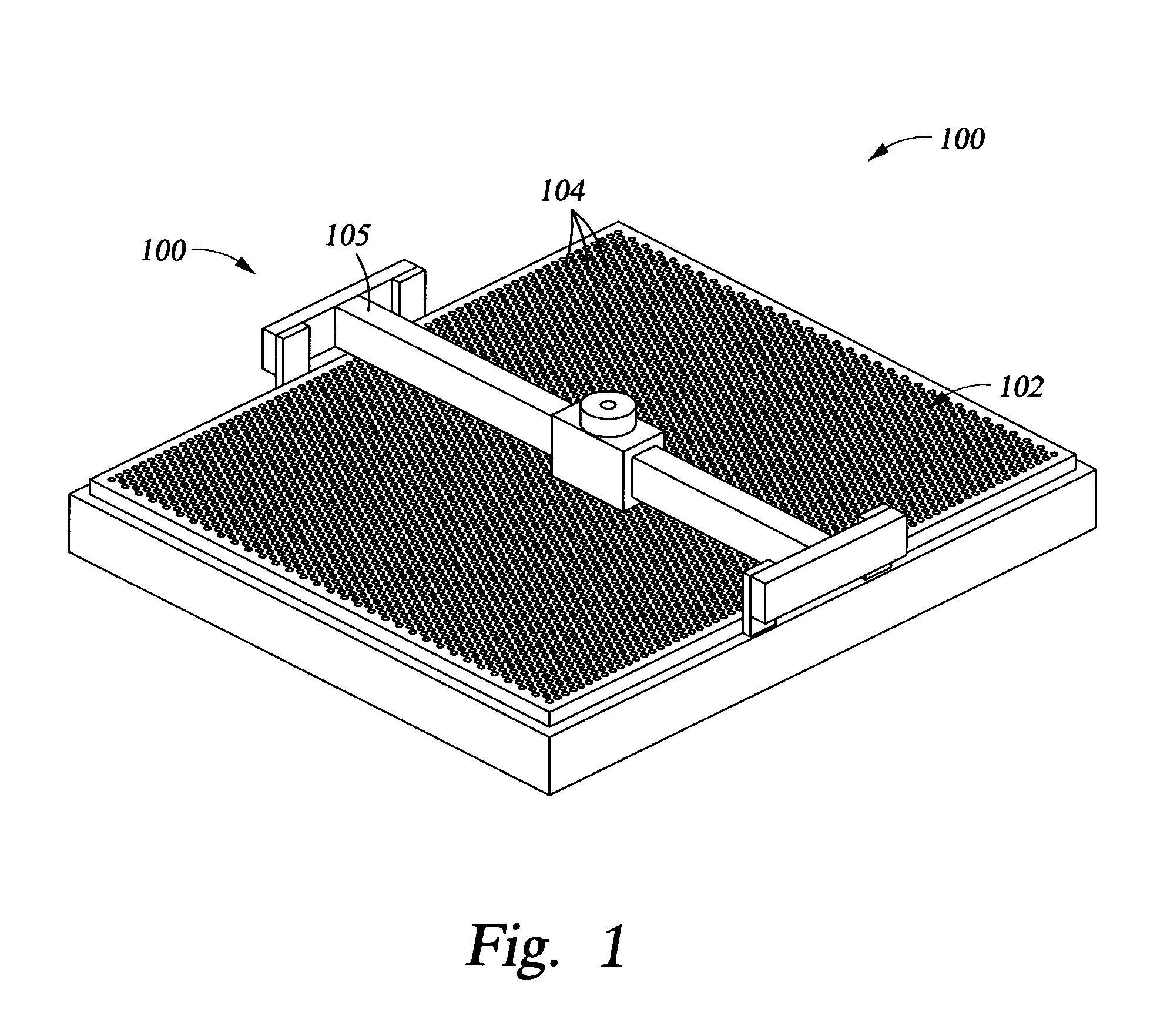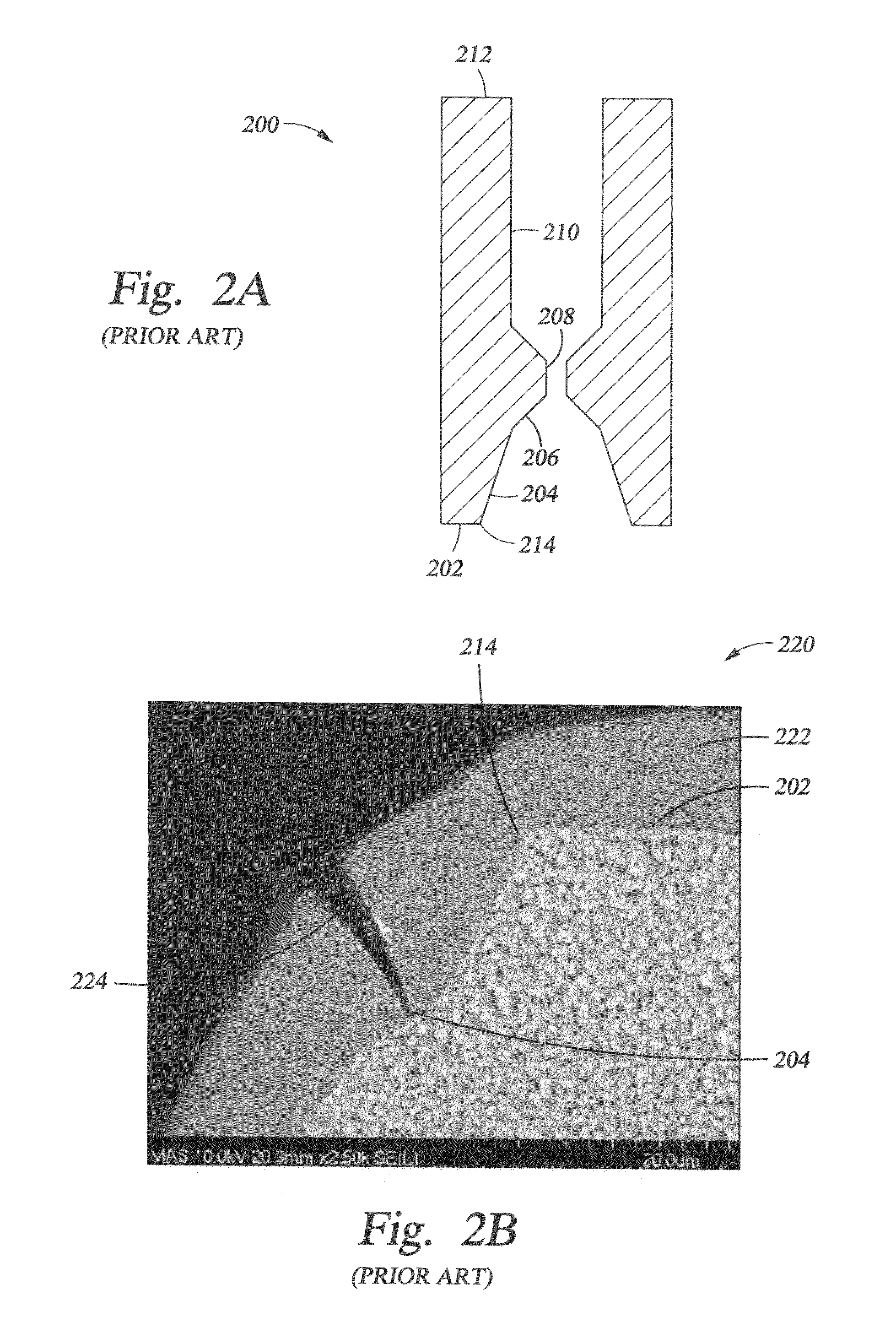Particle reduction on surfaces of chemical vapor deposition processing apparatus
a chemical vapor deposition and processing apparatus technology, applied in the direction of foil printing, manufacturing tools, plasma technology, etc., can solve the problems of affecting the overall performance of the solar cell, reducing the yield of operable devices produced on a semiconductor substrate, and major defects on the surface of photodiodes used in small device displays and indicators
- Summary
- Abstract
- Description
- Claims
- Application Information
AI Technical Summary
Benefits of technology
Problems solved by technology
Method used
Image
Examples
example one
[0066]A diffuser cone exterior surface surrounding the cone-shaped exit holes was bead blasted, to achieve a 70 μ-in. Ra finish on flats and inside cone holes using the following parameters:[0067]a. a 120 grit aluminum oxide, 99.5% purity, white[0068]b. Nozzle angle to cone side face: 90±5 degrees[0069]c. Nozzle distance from cone side: 12.0±1.0″[0070]d. Nozzle traverse velocity: 3.0±1.0″ / sec.[0071]e. Nozzle step increment: 2.0±0.5″[0072]f. Nozzle supply pressure: 70±2 psi[0073]g. Direction of travel: X-Y (as illustrated in FIG. 8B)[0074]h. Serpentine path of travel: The direction of each pass shall be opposite to the previous pass so as to produce a back and forth serpentine motion of the nozzle relative to the part. Use sufficient passes so as to cover entire part with a random surface appearance. Visible cosmetic variations such as lines, bands, or zones are not acceptable.[0075]i. Each pass start & stop: Each pass shall start a sufficient distance before the part boundary and sh...
example two
[0079]In a second aluminum alloy surface treatment process, a process chamber liner was bead blasted to obtain a 205±15 μ-inch surface. The aluminum oxide media was 35-46 grit, 99.5% purity white aluminum oxide. The abrasive bead blasting was done as a series of parallel nozzle passes, separated by a fixed horizontal step increment using automated robotic equipment of the kind known in the industry. FIGS. 9A and 9B illustrate the bead blasting configurations relative to the liner substrate 902 which was bead blasted. In the FIG. 9A configuration 900, a bead blasting nozzle 904 of the kind known in the art was positioned above the surface 903 of substrate 902 at a nozzle height 906 of about 5 inches. The nozzle angle α905 was typically about 45° to about 47° relative to the surface 903 of substrate 902. In FIG. 9B, the configuration 920 shows the path of the nozzle 904 over the substrate 902. The horizontal step increment (distance between parallel nozzle passes 922) was typically ab...
PUM
| Property | Measurement | Unit |
|---|---|---|
| surface area | aaaaa | aaaaa |
| surface area | aaaaa | aaaaa |
| thickness | aaaaa | aaaaa |
Abstract
Description
Claims
Application Information
 Login to View More
Login to View More - R&D
- Intellectual Property
- Life Sciences
- Materials
- Tech Scout
- Unparalleled Data Quality
- Higher Quality Content
- 60% Fewer Hallucinations
Browse by: Latest US Patents, China's latest patents, Technical Efficacy Thesaurus, Application Domain, Technology Topic, Popular Technical Reports.
© 2025 PatSnap. All rights reserved.Legal|Privacy policy|Modern Slavery Act Transparency Statement|Sitemap|About US| Contact US: help@patsnap.com



